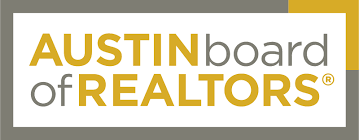The 30-year fixed mortgage rate is a crucial metric that
influences the housing market and the broader economy. It reflects the cost of
borrowing for homebuyers and impacts affordability and demand in the real
estate sector. Over the past two decades, the 30-year fixed mortgage rate has
experienced significant fluctuations, shaped by various economic factors and
monetary policies.
In 2000, the average mortgage rate was relatively high,
standing at 8.06%. The rate peaked in May at 8.52%, indicating a period of
elevated borrowing costs. This was followed by a slight decline in 2001, with
the average rate dropping to 7.04%. The downward trend continued into 2002,
where the rate averaged 6.54%. This period marked a transition from high to
moderate mortgage rates, influenced by economic conditions and changes in
monetary policy.
A significant decline occurred in 2003 when the rate
averaged 5.82%. This drop was driven by the Federal Reserve's efforts to
stimulate the economy following the early 2000s recession. From 2004 to 2005,
the rates remained relatively stable, hovering around 5.84%. However, in 2006,
the rate started to rise again, averaging 6.41%. This upward trend continued
into 2007, with the rate reaching 6.34%.
The financial crisis of 2008 marked another turning point.
The mortgage rate dropped sharply, averaging 6.04% in 2008 and further
declining to 5.04% in 2009. The Federal Reserve's aggressive interest rate cuts
and other measures to stabilize the financial system significantly lowered
borrowing costs. The rate continued to decline in the following years, with
2010 seeing an average rate of 4.69%. In 2012, the rate hit a record low of
3.66%, reflecting the ongoing efforts to support the economy during the recovery
period.
As the economy gradually improved, mortgage rates began to
rise, albeit slowly. Between 2013 and 2018, rates fluctuated between 3.39% and
4.87%, reflecting gradual economic improvements and changes in monetary policy.
In 2019, the rate averaged 3.78%, indicating a relatively stable borrowing
environment.
The onset of the COVID-19 pandemic in 2020 led to another
significant shift in mortgage rates. The Federal Reserve responded by lowering
interest rates to near-zero levels, which caused mortgage rates to drop to
historic lows. The average rate in 2020 was 3.09%, with a notable decline to
2.69% by December. This trend continued into 2021, with rates remaining below
3% for most of the year, making it an opportune time for refinancing and home
purchases.
However, in 2022, mortgage rates began to rise sharply due
to inflationary pressures and the Federal Reserve's efforts to combat rising prices by
increasing interest rates. The average rate for 2022 was 5.31%, with highs
reaching 6.90% by October. The trend of rising rates continued into 2023 and
2024, with the average rate for July 2024 standing at 6.85%. On August 2, 2024,
the rate for a conventional 30-year mortgage was 6.375%, while other loan
types, such as the FHA 30-year, were at 6.00%. These slight declines were a result of an announcement from the Federal Reserve citing an increase
in unemployment and other unfavorable job numbers. These economic indicators
often lead to a more cautious economic outlook, prompting a reduction in
mortgage rates to support the housing market.
These fluctuations in the 30-year fixed mortgage rate
highlight the importance of understanding market conditions and economic
factors. Prospective homebuyers and investors need to consider these rates when
making financial decisions, as they significantly impact affordability and
long-term financial planning.




